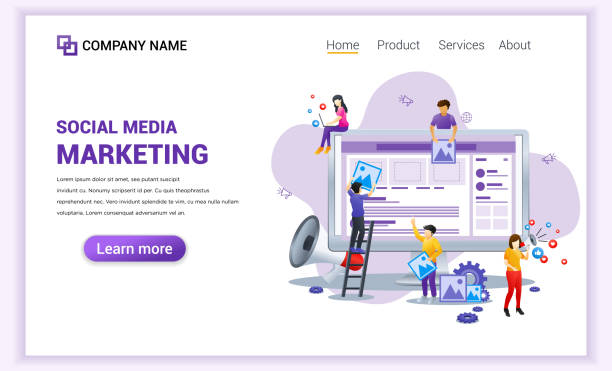The Importance of SEO-Optimized Website Design in the Digital Age
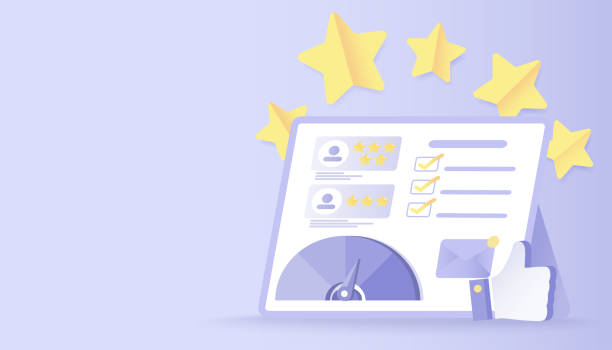
In today’s competitive world, merely having an online presence is not enough; rather, SEO-optimized website design has become a vital necessity.
This approach means building a website that is not only attractive and functional for users but also fully optimized and understandable for search engines like Google.
The main goal of #SEO_website_design is for your website to achieve higher rankings in organic search results for #keywords relevant to your business or content.
This means increasing your site’s #visibility, attracting more traffic, and ultimately converting visitors into loyal customers or followers.
Without search engine optimization (SEO), even the most beautiful and content-rich websites may get lost among the vast amount of information on the internet and never reach their target audience.
In fact, SEO is no longer a luxury option but an essential component in the digital strategy of any business or individual seeking sustainable online success.
In this article, we will educatively and explanatorily cover all aspects of SEO-centric website design and assist you on the path to professional site optimization.
Are you bothered by losing customers who visited your site to make a purchase?
Rasawweb is your specialized solution for having a successful online store.
✅ Significantly increase your online sales
✅ Build trust and professional branding among customers⚡ Get a free consultation from Rasawweb specialists!
Key Principles of Website Design with an SEO Approach

To achieve an SEO-optimized website design, it is essential to incorporate fundamental SEO principles from the very beginning of the design process.
These principles include Technical SEO and On-Page SEO.
In the technical section, aspects such as site loading speed, website responsiveness (being mobile-responsive), proper URL structure, and the use of SSL certificates (HTTPS) are highly important.
Search engines give higher scores to websites that provide a fast and secure user experience.
On the other hand, in the content section, the intelligent use of targeted keywords in titles, texts, meta descriptions, and image tags plays a very important role.
These keywords help search engines better understand your site’s content and link it to relevant user searches.
Additionally, logical content organization using heading hierarchies (H1, H2, H3, etc.) and proper internal linking not only helps search engines crawl and index the site but also improves user experience.
An SEO-optimized website design requires a deep understanding of this interaction between technical and content factors to provide maximum visibility for a website.
This specialized and guidance section helps you lay the foundations for a powerful site.
Technical Considerations in SEO-Optimized Website Design

SEO-optimized website design would be incomplete without considering technical aspects.
Page loading speed is one of the most important factors; a site that loads slowly not only frustrates users but also decreases its SEO ranking.
Tools like Google PageSpeed Insights can help you identify speed issues.
Mobile-friendliness is another vital factor; given the increasing use of smartphones for searching, Google prioritizes responsive sites.
Structured data markup (Schema Markup) also helps search engines better understand your content and display it as richer results (Rich Snippets) in search outcomes.
This includes information such as business address, user reviews, product prices, and so on.
An XML Sitemap file, correctly created and submitted to Google Search Console, helps search engines discover and index all pages of your site.
Finally, ensuring that your website is free of 404 errors (pages not found) or redirect chains is essential for an SEO-optimized website design.
| Technical SEO Factor | Importance Description | Suggested Tool |
|---|---|---|
| Site Speed | Better user experience, higher ranking in SERP | Google PageSpeed Insights |
| Mobile-Friendliness | Essential for mobile ranking, increased traffic | Google Mobile-Friendly Test |
| XML Sitemap | Helps in full site crawling and indexing | Google Search Console |
| Structured Data (Schema) | Display rich information in search results | Schema Markup Validator |
Content Strategy and Keyword Research for SEO
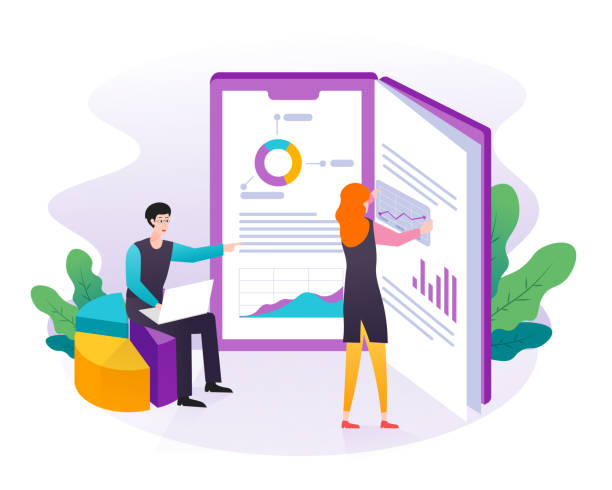
Content is the heart of any SEO-optimized website design.
But merely producing content is not enough; content must be purposeful and shaped according to user needs and relevant keywords.
Keyword Research is the first and most important step in content strategy.
This process helps you find the phrases users search for to find your products or services.
Tools like Google Keyword Planner or SEMrush can be very useful in this regard.
After identifying keywords, you should create content that not only naturally incorporates these keywords but also answers user questions and provides real value.
Quality content, comprehensive and authoritative, is not only favored by users but also rewarded by search engines.
Content structure should be readable and engaging, using images, videos, and infographics to increase user engagement.
A content calendar can help you with regular planning and continuous publication of fresh content, which is itself a positive signal for search engines.
Additionally, optimizing titles, meta descriptions, and URLs for each page based on target keywords is of great importance.
This specialized and guidance approach ensures that your website is not only visually appealing but also strong and competitive in terms of content.
Does your current e-commerce website not generate the sales you expect?
Rasawweb specializes in professional e-commerce website design!
✅ An attractive and user-friendly site aimed at increasing sales
✅ High speed and security for an ideal shopping experience⚡ Get a free online store design consultation with Rasawweb!
The Impact of User Experience (UX) on SEO-Optimized Website Design

The connection between User Experience (UX) and SEO is deeper than many think.
In fact, an SEO-optimized website design, without considering UX, cannot achieve sustainable success.
Search engines are increasingly prioritizing user experience signals such as Core Web Vitals.
These signals include user interaction with the site (e.g., clicks, time on page), Bounce Rate, and ease of navigation.
A site with poor UX will have a high bounce rate, meaning users quickly leave the site.
This is a negative signal to Google, indicating that your content or site structure is not engaging or useful for the user.
In contrast, a website design with excellent User Interface (UI) and User Experience (UX) encourages users to stay on the site longer, visit more pages, and interact with your content.
These behaviors are sent as positive signals to search engines and help improve SEO ranking.
Therefore, in the process of SEO-optimized website design, optimizing navigation elements, using clear CTAs (Call to Action), ensuring content readability, and responsive design for all devices should be prioritized.
Focusing on the end-user not only helps your business goals but also indirectly strengthens your site’s SEO.
This analytical and explanatory section highlights the vital role of UX.
The Role of Backlinks and Off-Page SEO in SEO-Centric Website Design

Although SEO-optimized website design primarily deals with internal site aspects (On-Page), its success is highly dependent on off-page activities (Off-Page SEO) as well.
Backlinks, or links from other websites to your site, are known as one of Google’s most important ranking factors.
These links serve as “votes of confidence” from other sites to your content.
The greater the number and quality of inbound backlinks, the more your site’s Domain Authority increases in Google’s view.
In the process of SEO-centric website design, one should act in a way that the creation of valuable and shareable content paves the way for natural backlink acquisition.
In addition to backlinks, other off-page activities such as social media marketing, presence in relevant forums and communities, and participation in podcasts or webinars can also help increase your site’s visibility and credibility.
These activities indirectly influence your SEO ranking and demonstrate that your site is an authoritative and active resource in its field.
Therefore, while the focus is on internal SEO-optimized website design, the importance of off-page SEO strategies should not be overlooked.
This analytical section provides a more comprehensive look at the factors affecting SEO.
Measuring Success and Data Analysis in Site SEO

After implementing SEO-optimized website design, the next step is performance monitoring and data analysis.
Without precise measurement, you cannot ensure the effectiveness of your SEO efforts or identify and improve weaknesses.
Tools like Google Analytics and Google Search Console are two essential and free tools that every webmaster should use.
Google Analytics provides you with information about site traffic, user behavior, traffic sources, and conversion rates.
This tool helps you understand how users interact with your site and which pages receive the most visits.
In contrast, Google Search Console provides vital information about your site’s performance in search results, the keywords users found you with, the indexing status of pages, and crawl errors.
Regularly reviewing this data allows you to optimize your SEO-optimized website design strategy and make data-driven decisions.
Metrics such as keyword rankings, organic traffic, bounce rate, time on page, and conversion rate are your key performance indicators.
This analytical and guidance section helps you continuously improve your site’s performance.
| SEO Key Performance Indicator (KPI) | Description | Measurement Tool |
|---|---|---|
| Organic Traffic | Number of visitors via natural search | Google Analytics |
| Keyword Ranking | Site position for specific keywords | Google Search Console, SEMrush |
| Bounce Rate | Percentage of visitors who view only one page | Google Analytics |
| Time on Page | Duration of user’s presence on a page | Google Analytics |
Common Mistakes in Non-SEO-Centric Website Design

On the path to SEO-optimized website design, avoiding some common mistakes is crucial.
One of the biggest errors is neglecting site loading speed.
Many designers prioritize visual appeal and overlook large image sizes or unoptimized code that slow down speed.
Another error is the website not being responsive for mobile.
Given that a large portion of internet traffic comes from mobile, a site that doesn’t display well on mobile offers a terrible user experience and severely harms its SEO ranking.
Furthermore, weak or incomplete internal linking can prevent search engines from crawling your site effectively and cause them to overlook important pages.
Excessive use of keywords (Keyword Stuffing) is another old and harmful mistake that is not only penalized by Google but also disrupts the reading experience for users.
Not using alt tags for images, forgetting meta descriptions, or having duplicate page titles can all harm your site’s SEO potential.
Finally, continuous and unplanned changes in URL structure without using 301 redirects lead to 404 errors and loss of page rankings.
This educational and thought-provoking content helps you avoid these pitfalls and have a smoother path to SEO-optimized website design.
Are you tired of your company’s website not being seen as it deserves, and losing potential customers? Solve this problem forever with professional and effective website design by Rasawweb!
✅ Increase brand credibility and build customer trust
✅ Attract targeted sales leads⚡ Call us now for a free consultation!
Future Trends in SEO and Website Design
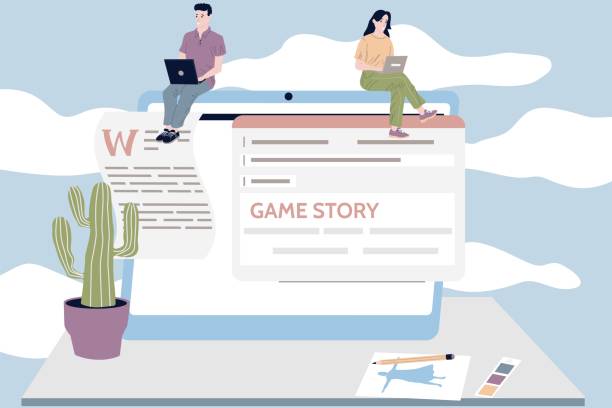
The world of SEO and SEO-optimized website design is constantly changing and evolving.
Understanding future trends is crucial for maintaining a competitive advantage.
Artificial Intelligence (AI) and Machine Learning play an increasing role in Google’s ranking algorithms.
These technologies help Google better understand user search intent and provide more relevant content.
Voice search is also growing due to the popularity of voice assistants like Siri and Google Assistant.
Website design optimized for voice search requires focusing on longer, question-based keywords and providing direct and concise answers.
Also, Visual Search and the use of images and videos for searching is a growing trend that necessitates optimizing images with proper alt tags and high-quality video content.
The emergence of Core Web Vitals as ranking metrics indicates Google’s increasing emphasis on actual user experience.
Finally, the focus on Local SEO for physical businesses and the importance of Google My Business profiles is also increasing.
This news and analytical section gives you insight into the future of SEO-optimized website design.
Long-Term Benefits of SEO-Optimized Website Design
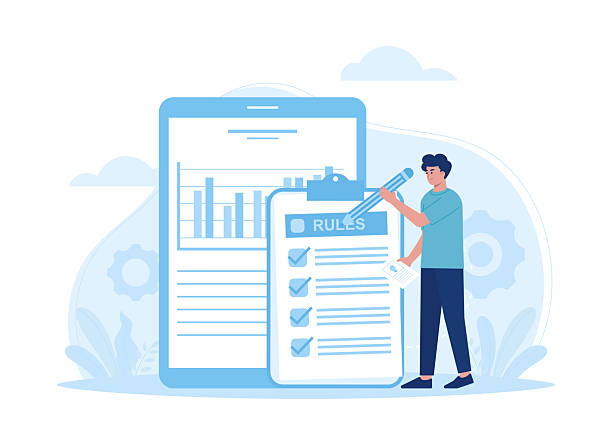
Investing in SEO-optimized website design is not just an expense but a long-term investment with significant returns.
The main advantage of SEO is increased organic traffic.
Organic traffic is traffic that comes to your site for free from search engines and, unlike paid advertising, does not require payment per click.
This means reduced marketing costs in the long term and increased ROI (Return on Investment).
Furthermore, SEO-optimized sites generally have greater credibility and trust in the eyes of users.
When users find you in high search rankings, they subconsciously perceive you as an authoritative and trustworthy source.
This helps increase the conversion rate and improve branding.
An SEO-optimized website design also helps you get ahead of competitors.
In digital marketing, if you are ranked first in search results, you capture a large portion of the traffic, while your competitors remain unseen.
Sustainability and scalability are other advantages of SEO; once your site is well-optimized, it can attract stable and growing traffic for a long time, even with minimal maintenance.
This explanatory and engaging section shows you why SEO-centric website design is a win-win game.
Frequently Asked Questions
| Question | Answer |
|---|---|
| What does SEO-optimized website design mean? | Designing a website that, in addition to an attractive appearance, is technically and content-wise optimized to achieve a higher ranking in search engine results. |
| Why is SEO-optimized website design important? | It leads to increased organic visits from search engines, improved business visibility, attracting more customers, and ultimately increasing sales. |
| What are the key elements in SEO-optimized website design? | Mobile optimization, high loading speed, quality and relevant content, proper use of keywords, suitable URL structure, and the use of title and meta tags. |
| What role does content play in site SEO? | Unique, valuable, informative content with target keywords plays a vital role in attracting users and achieving better search rankings. |
| What is Mobile-First Indexing? | An approach by Google where the mobile version of a website is prioritized for indexing and ranking. Therefore, site responsiveness for mobile is essential. |
| How can site loading speed be improved? | Image compression, using caching, optimizing CSS and JavaScript codes, using a strong hosting provider, and enabling Gzip compression. |
| What is the importance of keywords in SEO? | Keywords help search engines understand the topic of your page and link it to relevant user searches. |
| What role do Title Tags and Meta Descriptions play? | The title tag is the most important element in on-page SEO, and the meta description is a summary of the page’s content that encourages users to click. Both are displayed in search results. |
| How does Internal Linking help with SEO? | It helps search engines discover and index different pages of the site and distributes page value across different sections of the site. It also improves user experience. |
| What is the use of a Sitemap in SEO? | An XML file that provides a list of all important pages of the site to search engines to facilitate site crawling and indexing. |
And other services of Rasa Web Advertising Agency in the field of advertising
Smart Marketplace: A combination of creativity and technology for campaign management through marketing automation.
Smart Advertising Campaign: A creative platform to improve customer acquisition by customizing user experience.
Smart Marketplace: A dedicated service for growth in campaign management based on custom programming.
Smart Marketplace: A new service to enhance customer behavior analysis through Google Ads management.
Smart Conversion Rate Optimization: A new service for increasing online growth through SEO-centric content strategy.
And over hundreds of other services in the field of internet advertising, advertising consulting, and organizational solutions
Internet Advertising | Advertising Strategy | Sponsored Articles
Sources
SEO-Centric Website DesignTechnical Site SEOSEO Content StrategyComprehensive Site SEO Guide
? Are you looking for transformation and sustainable growth in your online business? Rasawweb Afarin, by providing comprehensive digital marketing solutions including secure website design, SEO, and social media management, paves your way to success. Trust us to make your brand shine in the digital space and achieve your goals.
📍 Tehran, Mirdamad Street, Next to Central Bank, Southern Kazeroun Alley, Ramin Alley, No. 6



